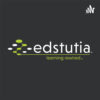
Change is hard, especially in the learning and development field. The irony of this revelation is that those of us in the L&D profession are supposed to be in the business of helping our learners navigate change.
We want our learners to be flexible and self-motivated. Yet, my experience is that we are often our own worst enemies at exhibiting these same characteristics. I spend a lot of my professional life being invited into organizations by the L&D department to help them introduce and adopt new learning technologies and approaches, and when asked which stakeholders are often the most resistant to these changes, it’s the L&D team itself that tops my list.
This is a problem since we’re facing one of the toughest internal transformational challenges we’ve ever encountered — moving from a training deliverable focus to a workflow embedded and performance focus. According to the recent 2018 “Annual L&D Benchmarking” report from Toward Maturity, we’re sailing into a perfect storm of both desire and skills when it comes to enabling this transformation. The reports shares that 98 percent of top organizations name “improving organizational performance” as a top priority, with the L&D department following suit at 93 percent listing “integrating learning into the workflow” as one of its priorities. All good right? Not exactly. The issue is that there is a large variance between the desire and the ability to deliver with “supporting work-place learning” listed as one of L&D’s weakest skills.
We have to realize and accept the need for a fundamental and significant change. What I’ve learned is that many don’t truly want to change. What they want is a validation that, with minor tweaking of a few operational processes, instructional methodologies and existing learning technologies they can have their cake and eat it too. Workflow based deliverables aren’t training deliverables. You may include or embed a degree of training in there somewhere, but training isn’t the focus. The sooner we realize that the sooner we’ll begin to turn our thinking, analysis and efforts to focusing on creating workflow deliverables in the first place, and not just mas-sage older efforts in a new way.
The second thing I see creating this disparity is our constant defense of old and outdated models. OK, deep breath, here it goes: Let’s look at approaches such as ADDIE, examine where they came from and exactly what they’re good at creating. I can feel the irate emails coming. Now I hope you’ve read enough of my columns that you know to stay with me on this one. I’m not blasting ADDIE or saying that it doesn’t have its place. What I am saying is that a methodology designed to meet a learning need from more than 40 years ago probably targets different learners and organizations. The deliverables, primarily the training, are not the deliverables of workflow learning. The challenging reality though is that studies outing organizations like ATD on the use of various ID approaches find that a large majority of us still use ADDIE as the primary approach to our design work, while newer approaches such as the Successive Approximation Model, just to name one, sits at a much smaller percentage. I’m not promoting SAM as the answer, but I am challenging us with owning the fact that this brave new world won’t appear without the adoption of newer approaches on our part.
Finally, it’s tough to beat Dustin Johnson on the golf course with wooden shafted clubs. When it comes to performing at the optimal level, equipment matters. That applies to the equipment and tools as well. If you want to lead with workflow deliverables, we need to design first and foremost with equipment and tools that enable and create workflow learning deliverables. There is a whole host of incredible new authoring tools that help create workflow learning. I’m tracking eight in my own work that I didn’t use three to five years ago.
Back to my golf metaphor, I’m not going to beat DJ even with the best clubs because I don’t have the golfing skills to do it. In other words, ability beats tools.
Workflow learning will change the L&D landscape forever. The questions are will we change, do we know how to make the instructional change, and are we adopting the tools to enable it?
















